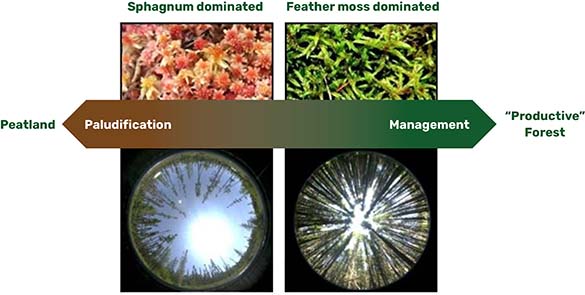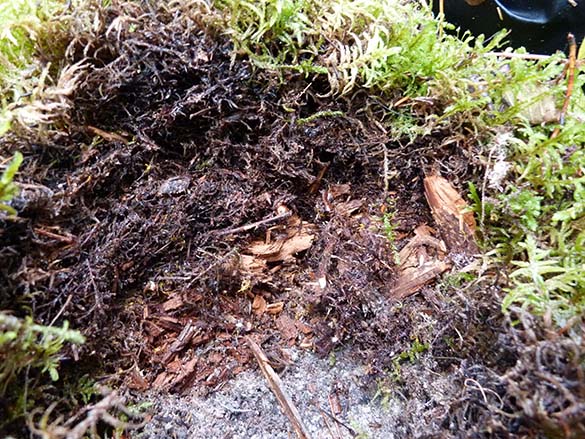Moss carbon extension and module

Mosses and their role in peat formation have a key role in the carbon cycle of upland coniferous forests. This is especially true in black spruce dominated forests, which are the most common and widespread coniferous forests in the Canadian boreal.

Text version
Four photos: 1) Sphagnum dominated 2) Feather moss dominated 3) Sparse canopy 4) Dense canopy. Showing the spectrum of black spruce forests from a productive, managed forest to a low productivity forest undergoing paludification that is in transition towards a peatland.
To improve our ability to estimate the carbon balance of black spruce (Picea mariana (Mill.) B.S.P.) forests in the boreal forest, the Canadian Forest Service (CFS) has developed a moss carbon extension (MOSS-C) for the Carbon Budget Model of the Canadian Forest Sector (CBM-CFS3). A MOSS-C module for the Generic Carbon Budget Model (GCBM) was also developed.
The MOSS-C simulates the flow of carbon from the growth of live biomass through to the decomposition of dead moss litter and development of peat. It splits the moss pools into two moss carbon functional groups: sphagnum and feather moss dominated. Moss litter pools are split into slow and fast depending on their relative turnover rates.
The MOSS-C uses tree productivity to predict moss productivity as well as the relative decay rates of different moss pools.
About the MOSS-C
In 2010, a team of researchers specializing in forest carbon dynamics and soil science from McGill University and the CFS collaborated to develop the MOSS-C extension. Their goal was to improve the CBM-CFS3’s estimation of organic soils (‘peaty’ soils) in coniferous forests, especially those dominated by black spruce.

A three year, large-scale field study collected data and analyzed the relationships between moss growth, carbon storage and tree productivity. The extension was developed using this empirical data and a beta-version was tested for 75 validation plots across Canada - mainly in the Boreal Shield, Boreal Plains and Taiga Plains.
Using the MOSS-C extension significantly increased accuracy and reduced uncertainty in the CBM-CFS3’s estimation of carbon stored in soil for upland black spruce forests.
MOSS-C availability
Testing of an open source version of the MOSS-C within the new spatially explicit GCBM, built on the Full Lands Integration Tool (FLINT) platform developed by moja global, is ongoing. The impacts of different human-caused disturbance types, such as oil and gas development, are also being researched and integrated into the MOSS-C module.
Have questions?
Contact Stephen Kull if you are interested in testing a beta version of the CBM-CFS3 that includes the MOSS-C extension.
Find out more
Canadian Forest Service Publications
Page details
- Date modified: